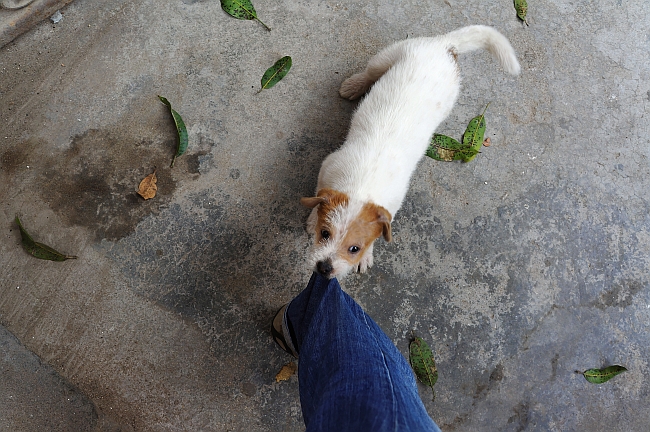Most pet owners assume their dogs are darling little angels that wouldn’t hurt a fly, and for the majority of canine companions that may be true. If the dog were to snap at someone, many would assume the aggression would be exercised in defending their owner, or if the pet was suddenly approached, startled or attacked by another unfamiliar dog or person. However, statistically speaking, this is less likely to be true.
The Dog Bite Law estimated that 77% of dog bite victims occur on a friend of relative of the dog’s owner, and more than 50% of the biting occurs actually at the dog’s home. This suggests that a dog’s primal instinct to defend, eat, hunt, or warn other creatures is often directed at those who provide for him. (We include this information not to alarm but rather inform pet owners to expect the unexpected and to know how to respond properly in difficult situations.)
How To Handle Dog-Bite Scenarios
- Remain calm. Whether your dog bit you, a friend, or someone you’ve never met, stressing out or raising your voice will only heighten the tension and may even cause your pup to nip again.
- Distance the dog from the trigger. If your dog was angered or incited by the person, or is reacting to a high-stress situation, try to get your dog under control and away from whatever caused the reaction.
- Wash the wound. Immediately clean the wound with warm water and soap to avoid any infection.
- Get medical attention. Depending on the level of the injury, offer to take the victim to the hospital. The polite and right thing to do would be to offer to pay for the visit. Expressing good will and taking full responsibility and providing basic financial support might keep you from being hit with a law suit later on.
- File a Police Report. This is the BEST way to protect yourself from potential further prosecution. Notifying the police will not only allow you the chance to provide an account of all the happened, but it will also prove that you as the dog owner sincerely care about the welfare of the other person as well as the safety of others. Having a third party’s objective report will also prove helpful in the event that the victim prosecutes. (This kind of case could end up in a civil court, a criminal court, or a dog/animal control court.)
- Provide paper work. Show proof of the dog’s vaccinations both in the police report and to the bite victim. Include any insurance you may have for the pet, as well as your contact details (if the person does not have them already). If you have pet insurance, you must report the incident soon after it occurs.
- Take action to protect your dog and other people. Consider liability insurance (if you don’t have it), and if you are worried your dog could bite again. It would be irresponsible not to take action by protecting your pup through insurance. Next, working with a trainer or animal behaviorist help identify the stress trigger for your dog, and learn how to desensitize him to it. Note: It would also is important to learn why dogs bite, and the reasons why negative or destructive behaviors occur in canines.
Review these helpful resources:
- Why Dogs Bite
- Why a Dog Might Bite A Child
- How To Protect Your Child From Getting Bitten
- How To Train Aggressive Dogs
- The Top 10 Breeds that Attack Children
- Dog Breeds That Are Banned in Certain Countries (Find out if your pup is considered “high risk.”)

